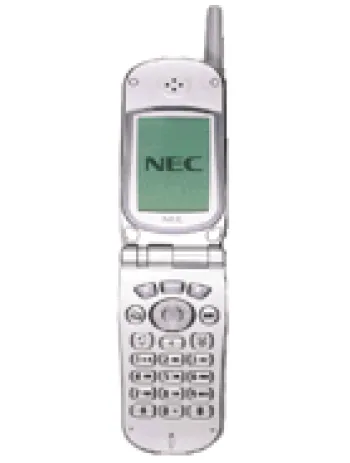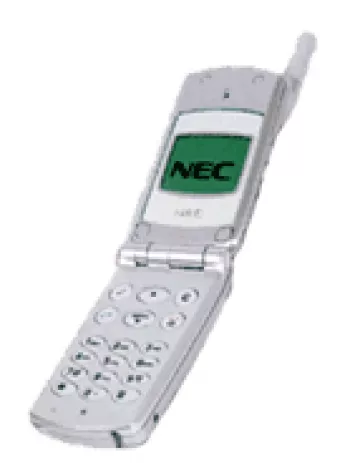
Overview of the NEC e949/L1
The NEC e949/L1, launched in the second quarter of 2005, represents a notable feature phone from its era. Despite its discontinuation, it provides a fascinating glimpse into the evolution of mobile technology. Designed for simplicity and functionality, the NEC e949/L1 was part of a generation of devices that prioritized essential communication features, compact design, and basic multimedia capabilities.
Design and Build
The NEC e949/L1 boasts a sleek design, measuring 102 x 47.9 x 11.9 mm, and weighing in at 96 grams. This compact form factor made it an attractive choice for users seeking portability. The phone uses a Mini-SIM card and comes in a classic black color. Its construction emphasizes durability and ease of use, characteristic of feature phones of that time.
Display
The phone is equipped with a 1.9-inch TFT display, capable of rendering 65K colors. With a resolution of 176 x 220 pixels, the screen offers clear and vibrant visuals for its size, although it was limited by today's standards. The screen-to-body ratio is approximately 23.3%, which is typical for phones of that generation.
Camera
The NEC e949/L1 features a single 1.3 MP main camera. Although basic, this camera was adequate for simple photography needs and allowed users to capture and share moments effortlessly. The phone also supports video recording, an added advantage at the time, albeit with limited quality when compared to modern smartphones.
Memory and Storage
The device includes 25MB of internal storage, which was modest but sufficient for storing essential data, contacts, and a few multimedia files. It does not offer external card slot support, which meant users had to manage their storage judiciously. The phonebook can store up to 500 entries, and call records for 20 dialed, 20 received, and 20 missed calls, meeting basic communication needs.
Battery and Performance
Powered by a removable Li-Ion 600 mAh battery, the NEC e949/L1 offered a stand-by time of up to 140 hours and talk time of up to 2 hours and 20 minutes. This battery life was relatively standard and demanded careful management to ensure continuous use throughout the day. The phone functioned smoothly within its operational limits, handling basic tasks effectively.
Network and Connectivity
Operating on GSM technology, the NEC e949/L1 supported 2G bands (GSM 900/1800/1900). It featured GPRS Class 10 for data connectivity but did not support EDGE technology. For short-range communication, it provided Bluetooth 1.2, although it lacked WLAN, GPS, and radio capabilities. Data transfer and charging were facilitated through a proprietary USB connection.
Multimedia and Entertainment
The NEC e949/L1 came with support for downloadable polyphonic ringtones and Java MIDP 2.0, allowing users to enjoy basic games and applications. Although lacking a loudspeaker and 3.5mm jack, it offered vibration alerts and supported messaging formats such as SMS, EMS, MMS, and Email. The WAP 2.0/xHTML browser accommodated basic web browsing.
Conclusion
The NEC e949/L1 is a testament to the transitional phase of mobile technology, bridging the gap between early mobile phones and modern smartphones. While it may seem limited compared to today’s standards, it fulfilled the essential communication and multimedia needs of its time. Its compact design, robust build, and practical features made it a reliable device in its day, laying the groundwork for future innovations in the mobile industry.
Main Features of NEC e949/L1
- Ultra-slim Design: Just 11.9 mm thick, making it easy to carry.
- Lightweight: Weighs only 96 g.
- TFT Display: 65K color display for clear visuals.
- 1.3 MP Camera: Capture basic photos with the single rear camera.
- Bluetooth 1.2: Enables wireless connectivity with other devices.
- Java Support: MIDP 2.0 for running Java applications.
- Expandable Phonebook: Stores up to 500 entries.
- Convenient Messaging: Supports SMS, EMS, MMS, and Email.
- Decent Internal Memory: 25MB for storing essential data.
- Removable Battery: 600 mAh battery with standby of up to 140 hours.
NEC e949/L1 Main Disadvantages
- Lacks 3G/4G support as it only supports GSM 2G networks.
- No EDGE support for faster data speeds.
- Discontinued and no longer available in the market.
- Limited display quality with only 65K colors and low screen-to-body ratio (~23.3%).
- No expandable memory; lacks a card slot with only 25MB internal storage.
- Main camera is basic with only 1.3 MP.
- No front-facing (selfie) camera.
- Does not have a loudspeaker or 3.5mm audio jack.
- Lacks modern connectivity options such as Wi-Fi and advanced GPS.
- No FM radio support.
- Uses a proprietary USB interface instead of a common type.
- Limited battery capacity (600 mAh) with relatively short talk time.

View Also
More Phones
All Rights Reserved +14266 Phones © Mobilawy 2025
























